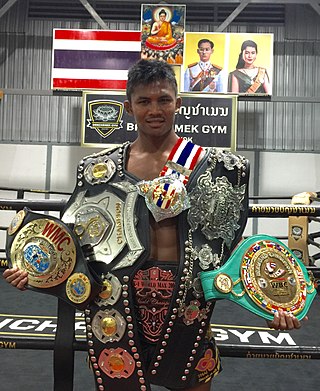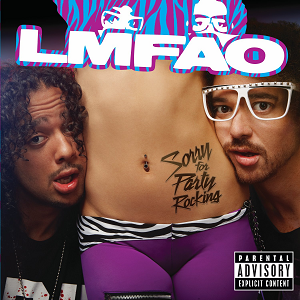Related Research Articles
An anthem is a musical composition of celebration, usually used as a symbol for a distinct group, particularly the national anthems of countries. Originally, and in music theory and religious contexts, it also refers more particularly to short sacred choral work and still more particularly to a specific form of liturgical music. In this sense, its use began c. 1550 in English-speaking churches; it uses English language words, in contrast to the originally Roman Catholic 'motet' which sets a Latin text.

"God Save the King" is the national anthem of the United Kingdom and the royal anthem of each of the British Crown Dependencies, one of two national anthems of New Zealand, and the royal anthem of most Commonwealth realms. The author of the tune is unknown and it may originate in plainchant, but an attribution to the composer John Bull has sometimes been made.

A salute is usually a formal hand gesture or other action used to display respect in military situations. Salutes are primarily associated with the military and law enforcement, but many civilian organizations, such as Girl Guides, Boy Scouts and the Salvation Army use formal salutes. Ordinary civilians also salute informally to greet or acknowledge the presence of another person, such as a tip of the hat or a hand wave to a friend or neighbor.

"Kimigayo" is the national anthem of Japan. The lyrics are from a waka poem written by an unnamed author in the Heian period (794–1185), and the current melody was chosen in 1880, replacing an unpopular melody composed by John William Fenton in 1869. While the title "Kimigayo" is usually translated as "His Imperial Majesty's Reign", no official translation of the title or lyrics have been established in law.

"La Borinqueña" is the official anthem of Puerto Rico.
The "State Anthem of Turkmenistan", also known as the "National Anthem of Independent Neutral Turkmenistan", was adopted as the national anthem of Turkmenistan in 1996, then again with modified lyrics in 2008. The music was composed by Turkmenistani composer Veli Mukhatov, who also composed the music of the Turkmen SSR's regional anthem.

"Amar Sonar Bangla" is the national anthem of Bangladesh. An ode to Mother Bengal, the lyrics were written by Bengali polymath Rabindranath Tagore in 1905, while the melody of the hymn was adopted from the Baul singer Gagan Harkara's song "Ami Kothay Pabo Tare" set to Dadra Tala. The modern instrumental rendition was arranged by Bangladeshi musician Samar Das.

"Meda Dau Doka", or "God Bless Fiji", is the national anthem of Fiji. The lyrics were written by Michael Francis Alexander Prescott (1928–2006) to the tune of the hymn "Dwelling in Beulah Land" by Charles Austin Miles (1911), and the music was adapted by Viliame Bale, Superintendent and Director of Music in the Royal Fiji Police Band. The anthem was adopted upon independence from the United Kingdom in 1970.

"Tautiška giesmė" is the national anthem of Lithuania, also known by its opening words, "Lietuva, Tėvyne mūsų", and as "Lietuvos himnas". The music and lyrics were written in 1898 by Vincas Kudirka, when Lithuania was still part of the Russian Empire. The fifty-word poem was a condensation of Kudirka's conceptions of the Lithuanian state, the Lithuanian people, and their past. Shortly before his death in 1899, the anthem was performed for Lithuanians living in Saint Petersburg, Russia.

"Qaumee Salaam" is the national anthem of the Maldives. The lyrics were written by Muhammad Jameel Didi in 1948, and the melody was composed by Sri Lankan maestro Pandit Amaradeva in 1972.

The National Anthem of the Kyrgyz Republic is the title of the current national anthem of Kyrgyzstan, adopted on 18 December 1992 by a resolution of the Supreme Council of Kyrgyzstan. The music was composed by Nasyr Davlesov and Kalyy Moldobasanov, and the words were written by Jalil Sadykov and Shabdanbek Kuluyev.

Sombat Banchamek a.k.a. Buakaw Banchamek is a professional Muay thai fighter and kickboxer from Thailand of ethnic Kuy descent and Khon Isan, who formerly fought out of Por. Pramuk Gym, in Bangkok, Thailand, under the ring name Buakaw Por. Pramuk.

Menıñ Qazaqstanym is the national anthem of Kazakhstan since 7 January 2006, replacing the "Anthem of the Republic of Kazakhstan", which was in use since its independence in 1991, but had the same melody as the anthem of the Kazakh Soviet Socialist Republic.

The Olympic Games ceremonies of the Ancient Olympic Games were an integral part of these Games; the modern Olympic games have opening, closing, and medal ceremonies. Some of the elements of the modern ceremonies date back to the Ancient Games from which the Modern Olympics draw their ancestry. An example of this is the prominence of Greece in both the opening and closing ceremonies. During the 2004 Games, the medal winners received a crown of olive branches, which was a direct reference to the Ancient Games, in which the victor's prize was an olive wreath. The various elements of the ceremonies are mandated by the Olympic Charter, and cannot be changed by the host nation. This requirement of seeking the approval of the International Olympic Committee (IOC) includes the artistic portion of opening and closing ceremonies.
WebRTC is a free and open-source project providing web browsers and mobile applications with real-time communication (RTC) via application programming interfaces (APIs). It allows audio and video communication and streaming to work inside web pages by allowing direct peer-to-peer communication, eliminating the need to install plugins or download native apps.

Sorry for Party Rocking is the second and final studio album by American electronic duo LMFAO. It was released June 21, 2011, physically and digitally by Interscope Records as the follow-up to their debut album Party Rock (2009). "Party Rock Anthem" was the first single released from the album and was an international hit. The second single was "Champagne Showers" and reached number eight in New Zealand, and nine in Australia. It became an international hit, also charting in France, Ireland, and Austria. The third single, "Sexy and I Know It" was released on September 16, 2011. It peaked at number one on the US Billboard Hot 100 and also topped the charts in Australia, Canada, and New Zealand. "Sorry for Party Rocking" was released on January 9, 2012, as the fourth single from the album and peaked at number 8 in Belgium, 16 in France, 18 in Ireland, 19 on the US Pop Songs, 23 in the United Kingdom, 27 in New Zealand, 31 in Canada, 32 in Australia, and 49 on the Billboard Hot 100.

Annie VanderMeer is an American video game designer specializing in role-playing video games, best known for her narrative work on 2021's Unpacking and her design work on the 2012's Guild Wars 2.

The United Nations Climate Change Conferences are yearly conferences held in the framework of the United Nations Framework Convention on Climate Change (UNFCCC). They serve as the formal meeting of the UNFCCC parties – the Conference of the Parties (COP) – to assess progress in dealing with climate change, and beginning in the mid-1990s, to negotiate the Kyoto Protocol to establish legally binding obligations for developed countries to reduce their greenhouse gas emissions. Starting in 2005 the conferences have also served as the "Conference of the Parties Serving as the Meeting of Parties to the Kyoto Protocol" (CMP); also parties to the convention that are not parties to the protocol can participate in protocol-related meetings as observers. From 2011 to 2015 the meetings were used to negotiate the Paris Agreement as part of the Durban platform, which created a general path towards climate action. Any final text of a COP must be agreed by consensus.

A sign-on is the beginning of operations for a radio or television station, generally at the start of each day. It is the opposite of a sign-off, which is the sequence of operations involved when a radio or television station shuts down its transmitters and goes off the air for a predetermined period; generally, this occurs during the overnight hours although a broadcaster's digital specialty or sub-channels may sign-on and sign-off at significantly different times than its main channels.
References
- ↑ "Official Protocol Relating to the Governor-General". Jamaica: King's House. Archived from the original on 2012-02-17. Retrieved 2012-02-25.
The National Anthem is played when the Governor-General (and his wife if she accompanies him) reaches the designated seat(s), just before sitting.
- 1 2 3 4 "Act 390: National Anthem Act 1968; Incorporating all amendments up to 1 January 2006" (PDF). Malaysia: Commissioner of Law Revision. 2006. Archived from the original (PDF) on 11 January 2012. Retrieved 2 October 2011.
- 1 2 3 "DP 20-10, Ceremonieel & Protocol; Hoofdstuk 8 Muzikaal eerbetoon". Ministeriële & Defensie Publicaties (in Dutch). Netherlands: Ministry of Defence. §§2,5,10. Archived from the original on 25 April 2012. Retrieved 23 October 2011.
- ↑ "¿Sabías que "La Marcha de Ituzaingó" es un atributo presidencial como la banda y el bastón?". No. 3 December 2015. La Nación. 3 December 2015. Archived from the original on 20 October 2017. Retrieved 19 December 2015.
- 1 2 3 "16.3 Australian national anthem". Protocol Guidelines. Department of Foreign Affairs and Trade (Australia). Archived from the original on 2009-10-08. Retrieved 2009-03-11.
- ↑ Law No 5700 of 1 September 1971 Archived 21 November 2021 at the Wayback Machine Cap.3 Sec.II Art.24.V
- 1 2 3 "Heritage Structure | Section 3 – Anthems, Salutes and Protocol". Government of Canada. 12 October 2018. Archived from the original on 2022-09-14. Retrieved 2022-09-13.
- ↑ Peralta-Díaz, Fabrizio (Jun 27, 2021), Honores de Ordenanza al Presidente de la República del Ecuador, YouTube, archived from the original on November 10, 2022
- ↑ Rahvusringhääling, Eesti (2021-02-16). "Eero Raun: "Piduliku marsi" autorit süüdistati esialgu plagiaadis". menu.err.ee (in Estonian). Archived from the original on 2022-03-31. Retrieved 2022-04-23.
- ↑ Sõjaministeerium (1921), "Sõjaministri päevakäsud (1 Jan - 31 Dec 1921, nr. 1-753)", DIGAR, archived from the original on 2022-09-17, retrieved 2022-04-23
- ↑ Sõjaministeerium (1923), "Sõjaministri päevakäsud (3 Jan - 31 Dec 1923, nr. 4-584)", DIGAR, archived from the original on 2022-04-23, retrieved 2022-04-23
- ↑ Estonia selts (1910), "VII Laulupidu (12 Jun - 14 Jun) / Tallinna III Eesti laulupidu", sa.laulupidu.ee, archived from the original on 2022-05-22, retrieved 2022-04-23
- ↑ "Le Chant du Départ". Napoleon.org. Archived from the original on 2012-03-08. Retrieved 2012-02-09.
- ↑ Victor, A.J. "Haitian Patriotic Songs". AyitiHistory.com. Archived from the original on Feb 4, 2008. Retrieved 2009-03-11.
- ↑ "National Anthem". Department of the Taoiseach. Archived from the original on Jan 24, 2009. Retrieved 2009-03-11.
- ↑ "P. W. Joyce: Ancient Irish Music » 47 - Mór Chluana". Na Píobairí Uilleann. Archived from the original on 21 February 2014. Retrieved 3 February 2014.
- 1 2 "Joyce, Patrick Weston (1827–1914)". Ainm.ie (in Irish). Cló Iar-Chonnacht. Archived from the original on 20 February 2014. Retrieved 3 February 2014.
- 1 2 3 Ó Cuív, Brian (2010-04-01). "Irish language and literature, 1845-1921". In W. E. Vaughan (ed.). Ireland Under the Union, 1870-1921. A New History of Ireland. Vol. VI. Oxford University Press. p. 425. ISBN 9780199583744. Archived from the original on 2024-03-30. Retrieved 3 February 2014.
- ↑ "Amhrán Dóchais". Library. Ireland: Contemporary Music Centre. Archived from the original on 23 September 2015. Retrieved 3 February 2014.
- ↑ Casùla, Francesco Cesare (16 January 2013). Glossario di autonomia Sardo-Italiana: Presentazione del 2007 di FRANCESCO COSSIGA. Logus mondi interattivi. ISBN 9788898062140. Archived from the original on 28 August 2023. Retrieved 19 March 2023.
- ↑ "Il primo inno nazionale, "S'hymnu sardu nationale"". 21 February 2021. Archived from the original on 24 January 2021. Retrieved 28 April 2021.
- ↑ Hoedeman, Jan; Theo Koelé (5 June 2004). "Beatrix: 'Het Wilhelmus is van mij'". De Volkskrant (in Dutch). Archived from the original on 2016-03-04. Retrieved 23 October 2011.
- 1 2 3 "Protocol for using New Zealand's National Anthems". Ministry for Culture and Heritage (New Zealand). Archived from the original on 2013-04-24. Retrieved 2009-03-11.
- ↑ "Instructions for Playing the Anthem". Encyclopaedia of New Zealand . Ministry for Culture and Heritage (New Zealand). 1966. Archived from the original on 2009-04-25. Retrieved 2009-03-11.
If the first six bars only are used, as for a salute to the Governor-General as the Queen's representative, the anthem is to be played "fortissimo" at M.M. 60 crotchets.
- ↑ "New Zealand Governor-General Swearing in: Vice Regal Salute". YouTube . Archived from the original on 2023-12-13. Retrieved 2023-12-05.
- ↑ Guard Of Honor Ceremony For President Dr. Arif Alvi In President House | 24 News HD, archived from the original on 2023-11-18, retrieved 2023-10-07
- ↑ Webb, Michael (1993). Lokal Musik: Lingua Franca Song and Identity in Papua New Guinea. Cultural Studies Division, National Research Institute. p. 37. ISBN 978-9980-68-019-8. Archived from the original on 2024-03-30. Retrieved 2021-12-29.
- ↑ Quezon, Manuel L. (2004-06-24). "The Long view". Philippine Daily Inquirer . Archived from the original on 2020-02-26. Retrieved 2009-03-11.
- 1 2 Walsh, Thomas P. (2013). Tin Pan Alley and the Philippines: American Songs of War and Love, 1898-1946 : a Resource Guide. Rowman & Littlefield. pp. 271–273. ISBN 9780810886087. Archived from the original on 30 March 2024. Retrieved 6 January 2014.
- ↑ "Parangal sa Pangulo [Marangal na Parangal March] (Instrumental)". YouTube . Archived from the original on 2022-12-20. Retrieved 2022-12-20.
- ↑ Archived 2014-08-25 at the Wayback Machine Music notation
- ↑ "Hino Maria da Fonte". YouTube . Archived from the original on 2022-12-20. Retrieved 2022-12-20.
- ↑ "Președintele Poloniei, în vizită oficială la București. Andrzej Duda a fost primit de Klaus Iohannis". YouTube . Archived from the original on 2022-12-20. Retrieved 2022-12-20.
- ↑ Guidelines for playing and singing national anthems Archived 2017-08-28 at the Wayback Machine Part IV of the Singapore Arms and Flag and National Anthem Rules
- ↑ Rutnin, Mattani Mojdara (1993). Dance, drama, and theatre in Thailand: the process of development and modernization. Tokyo: Centre for East Asian Cultural Studies for Unesco, the Toyo Bunko. p. 132. ISBN 978-4-89656-107-4. Archived from the original on 30 March 2024. Retrieved 7 March 2012.
- ↑ "หลักเกณฑ์การใช้เพลง "สดุดีจอมราชา"" (PDF) (in Thai). Office of the Prime Minister. 2018-07-23. Archived from the original (PDF) on 2019-03-06. Retrieved 2019-03-02.
- ↑ "ข้อบังคับทหารว่าด้วยการเคารพ" (PDF) (in Thai). Ministry of Defense of the Kingdom of THailand. 1936-03-12. Archived (PDF) from the original on 2022-09-22. Retrieved 2022-09-22.
- ↑ "A collection of Thai anthems" (in Thai). Thailand: Office of Public Relations. Archived from the original on 25 June 2006. Retrieved 7 March 2012.; "A collection of Thai anthems". Thailand: Office of Public Relations. Archived from the original on 24 June 2006. Retrieved 7 March 2012.
- ↑ TAWAT HUAHIN SUDDEE ข้างเขา หัวหิน (6 February 2012). "มหาฤกษ์ Combination RTA Band". Archived from the original on 2021-12-15. Retrieved 19 April 2018– via YouTube.
- 1 2 3 4 5 6 7 "Army Regulation 600–25: Salutes, Honors, and Courtesy" (PDF). U.S. Department of the Army. 2019-09-10. pp. 5–6, Table 2-1. Archived (PDF) from the original on 2021-04-14. Retrieved 2021-11-01.
- ↑ "Royal Salute .. Present Arms!". YouTube . Archived from the original on 2022-12-20. Retrieved 2022-12-20.
- ↑ "Marcha presidencial de Venezuela". YouTube . Archived from the original on 2022-11-12. Retrieved 2022-11-12.
- ↑ "Banda de guerra atmarbv 05jul2016". YouTube . Archived from the original on 2022-12-20. Retrieved 2022-12-20.
- ↑ "China Resumes Control of Hong Kong, Concluding 156 Years of British Rule". The New York Times. Archived from the original on 20 June 2016. Retrieved 19 April 2018.
- ↑ Morris, Ewan (May 1998). "'God Save the King' Versus 'The Soldier's Song': The 1929 Trinity College National Anthem Dispute and the Politics of the Irish Free State". Irish Historical Studies. 31 (121): 72–90. doi:10.1017/S0021121400013705. JSTOR 30007063. S2CID 156107767.
- ↑ Bogdanor, Vernon (1997). The Monarchy and the Constitution. Oxford University Press. p. 282. ISBN 9780198293347. Archived from the original on 30 March 2024. Retrieved 7 January 2014.